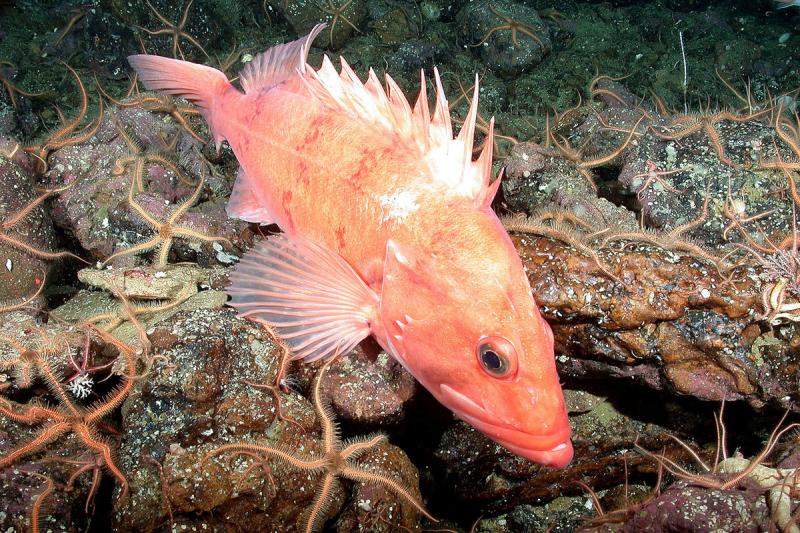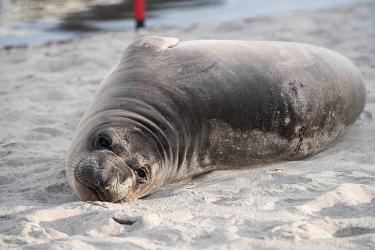Deep-water rockfish reeled quickly to the surface often emerge from the water with eyes and organs bulging like alien beings—due to the sudden change in pressure—a condition known as barotrauma.
Now new research shows that if fishermen return fish to their natural depths quickly, their bodies return to normal and they can survive any ill effects. The research focused on cowcod and bocaccio, two historically overfished rockfish species caught off the coast of Southern California. They were returned to the depths using special descending devices that are now standard for many recreational fishermen.
Prior to this research and the use of descending devices, it was widely assumed that deep-dwelling rockfish could not survive catch and release due to their extensive barotrauma injuries. “We now know that these deep-dwelling rockfish species can survive,” said Nick Wegner, a research scientist at NOAA Fisheries’ Southwest Fisheries Science Center and lead author of the new research. “That is good news for the fish, and good news for the fishermen who go to the trouble of trying to release them properly.”
The research was published in ICES Journal of Marine Science. Scientists used acoustic transmitters to track released cowcod and bocaccio for up to a year on an underwater seamount approximately 40 miles off the coast of San Diego, California. They were captured at depths of 75 to 183 meters, or about 250 to 600 feet. By tracking the fish for extended periods, researchers found that most fish survived beyond 30 days. Of those fish that died, 40 percent died beyond the typical 2-day tracking window used in many fish survivorship studies.
That underscores the importance of monitoring the fish following their capture and monitoring their survival over longer periods, Wegner said.
Anglers Adopted Descending Devices
“We were asking the question: can we release these fish safely and can they survive over the longer-term? That is really what determines their contribution to the population,” Wegner said. He praised fishermen for widely adopting descending devices that quickly lower rockfish to their regular depths. Used properly, the devices reverse the startling effects of barotrauma, which includes injuries such as bulging eyes and organs.
Responsible fishing practices such as the use of descending devices have helped contribute to the recovery of the species off Southern California, the research noted.
The research results have demonstrated to the fishing community the effectiveness of the devices, said Ken Franke, president of the Sportfishing Association of California. He praised the collaboration between scientists and fishermen in conducting the research, and outreach by scientists to recreational anglers. The Association also distributed thousands of free descending devices to anglers.
“It was the public and the agency doing the science together that really showed this is the right thing to do,” he said. “Without that, I don’t know that we would have come as far as we have.”
The fish showed some ill effects, such as ruptured gas bladders, from the sudden depressurization when they were caught. But the good news is that most injuries appeared to heal within about 30 days afterwards, the researchers said. About 90 percent of bocaccio tracked following capture survived in the longer term, while about 50 percent of cowcod survived.
“I am absolutely convinced that it was the effective sharing and outreach on the science that has convinced the public we know how to reduce these impacts on the fish,” Franke said.




